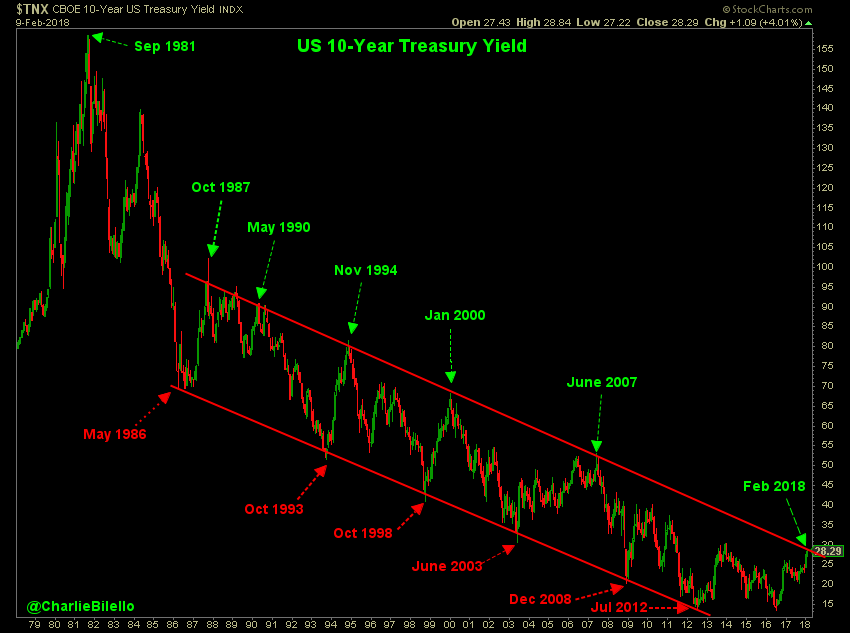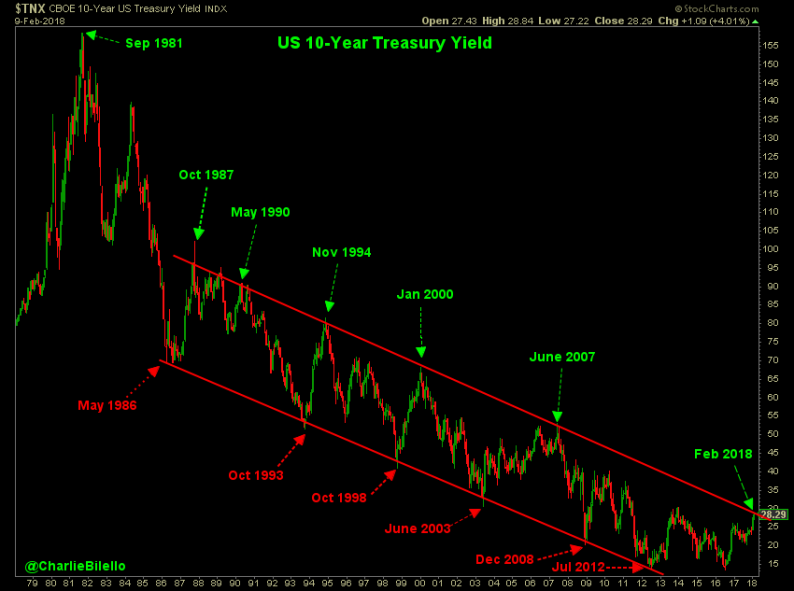Bond yields appear to be at a crossroads.
At 2.83%, the 10-Year Treasury yield is now at its highest level in over four years. It is also at the upper end of a downtrend channel that has been in place since the mid-1980s.

Source: Pension Partners, Stockcharts.com
The question all investors are asking: will yields finally break on through to the other side?
If economic growth and inflation are going to increase as expected from here, a continued rise in yields would seem likely.
But the better question perhaps is whether investors should welcome or fear such an outcome.
In the past 30 years, there have been a number of inflection points in the chart above where yields failed to break higher. These include:
At the opposite end of the spectrum, there have been a number of inflection points where yields failed to break lower. These include:
From these examples it appears that the failure in yields to push higher at inflection points was a more ominous sign than had they continued higher. For such a failure preceded economic weakness in 1990, 2000, and 2007 and a market crash in 1987.
While the recent decline in the equity markets is being blamed in large part on the rise in yields, there is little evidence historically showing that rising rates are necessarily bad for equities. In fact, just the opposite appears to be the case, with the S&P 500 actually outperforming on average in years in which 10-year Treasury yields have risen (see full post on this topic here).













Leave A Comment